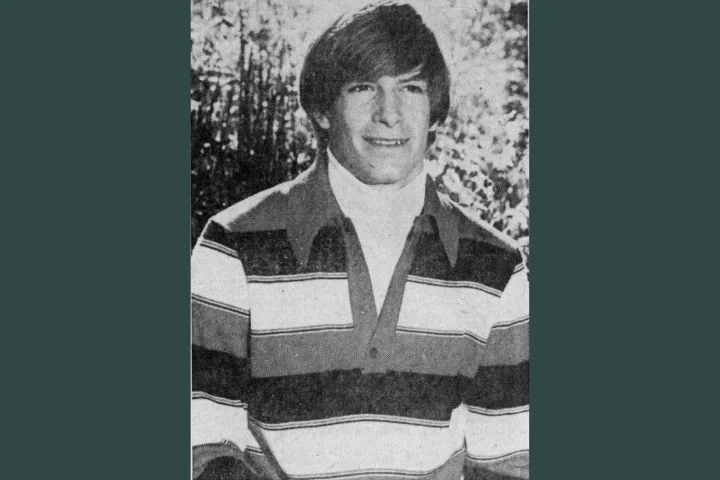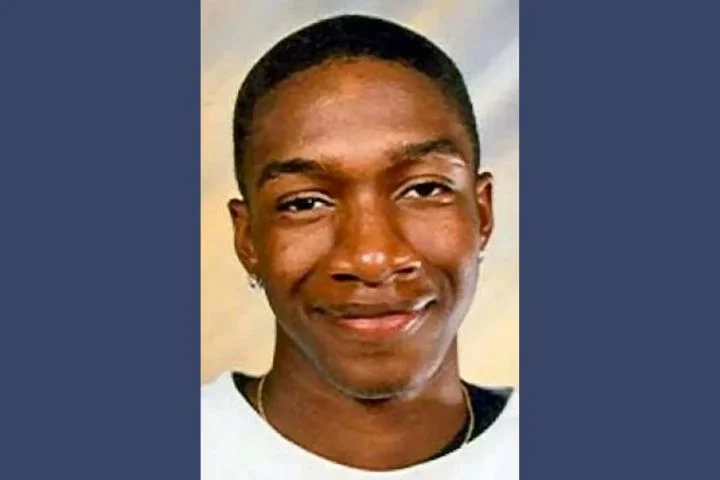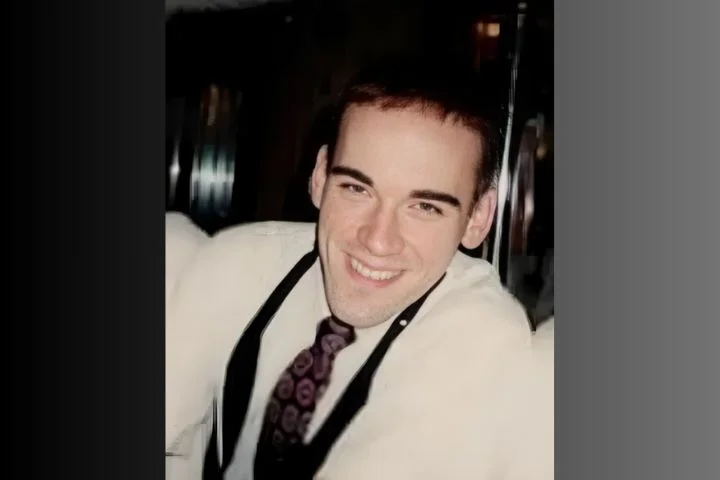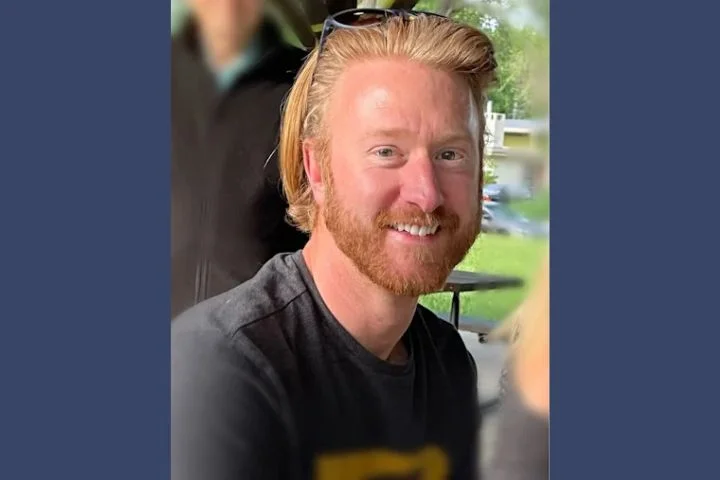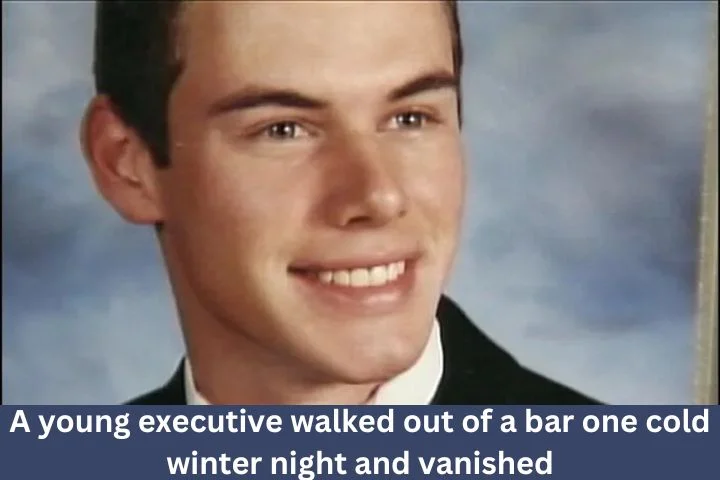Roger Ellison woke up early on the morning of Tuesday, February 10, 1981, and got himself ready for school. The 17-year-old, a senior at Cedaredge High School in Cedaredge, Colorado, rode the bus to school as usual, arriving in plenty of time to go to his locker before he had to head to his homeroom. Roger spoke briefly to one of his friends as he grabbed the books he needed for his first period class, but what happened to him after that is a mystery. He didn’t attend any of his classes that day and he was never seen again.
Roger’s parents, Ernest and Evelyn Ellison, grew concerned when he didn’t come home when school let out that afternoon. Roger, the youngest of their five children, was a dependable teenager who had no history of running away from home. He was a straight-A student and was looking forward to his high school graduation in a few months; he had been accepted at Western State College in Gunnison, Colorado, and had already picked out and paid for his dormitory room. He had no reason to disappear.
When they called Cedaredge High School, Roger’s parents were surprised to learn that he had missed all of his classes that day. He wasn’t the type of teenager anyone expected to skip school; prior to this, he had perfect attendance. Evelyn started calling all of her son’s friends, but none of them had any idea where he could be. The couple spent a sleepless night waiting by the phone for a call that never came.
Early Wednesday morning, Roger’s parents called the Delta County Sheriff’s Department and tried to report their son missing, but the sheriff said Roger hadn’t been missing long enough. According to Evelyn, “He told us we had to wait 48 hours before he could begin a search.” Unwilling to wait, the couple started driving around the area, searching in vain for any sign of Roger. “Suddenly, I was living every mother’s nightmare.”
On Friday, Roger’s case was assigned to Delta County Detective Keith Waibel. Although he initially thought he was dealing with a juvenile runaway, he quickly realized that Roger wasn’t the type of teenager one would expect to voluntarily vanish. He was a model student and a skilled skier who hoped to one day compete in the Olympics.
According to Roger’s parents, the teen had taken part in a skiing competition in Telluride, Colorado the weekend before he went missing; he hoped he would score high enough to earn a spot on the US ski team but fell a little short. Although he had been disappointed with the results, he didn’t seem overly depressed and was convinced he would do better when he competed in Aspen the following weekend.
He had been in a good mood before he left to go to school that morning. When he came into the kitchen for breakfast, he glanced out the window and told his mother that it looked like it might snow later that day. He commented that fresh snow would be a good omen for his upcoming ski competition, indicating that he had already moved on from his loss in Telluride.
Classmates described Roger as somewhat of a loner; his main interest was skiing and he didn’t socialize as much as some teenagers. While he was always friendly to everyone, he was also quite shy and didn’t go out of his way to be noticed. He had a close relationship with both of his parents, especially his father, who had been forced to retire early after a stroke and open heart surgery. The two of them spent a lot of time together.
Despite the fact that no one who knew Roger believed he had run away from home, Detective Waibel told reporters that he suspected Roger had gone to a ski resort in search of a job. Evelyn was certain this was not the case. “He always called when he would be late or left a note if he was leaving for someplace and we weren’t home.” She was sure he wouldn’t have left home without warning.
Roger should have been celebrating his 18th birthday on March 11, 1981; his parents noted that since he was legally an adult, there would be no reason for him not to contact them as they couldn’t make him come home if he didn’t want to. Although they hoped they would hear from him once his birthday arrived, they weren’t surprised when he failed to contact them. For them, it was just more proof that something bad had happened to him.
In May 1981, Roger’s classmates gathered on the school’s football field for their graduation. Ernest and Evelyn were too upset to sit in the stands and watch as one of Roger’s friends accepted his diploma for him; instead, the couple sat in the car in the parking lot and cried.
By July, his parents were desperate to know what happened to him; hoping to bring in some new leads, they announced that they were offering an $8,000 reward for information leading to Roger’s whereabouts. Evelyn wasn’t sure her son was still alive. “We think there was foul play. He would’ve let us know by now. Maybe somebody’s holding him or he saw something in Telluride that he wasn’t supposed to see.”
Detective Waibel admitted that he still had no idea where Roger might be but he didn’t think foul play was involved. “I think he’s out of the state. I think he just got fed up and left…I can’t find any indication of foul play.”
Roger’s parents pointed out that he hadn’t taken anything with him when he left for school that day; he had left with the clothes on his back and $3.00 in his wallet. All of his ski equipment was left behind, and his savings account, which contained $1,000 he planned to use to get a car or motorcycle, hadn’t been touched. If he planned to run away to a ski lodge as Detective Waibel thought, he would have at least taken his skis. Evelyn ruefully noted, “He was such a good boy. He wasn’t a runaway. But how do you convince people?”
Ernest told reporters that the uncertainty about his son’s fate was extremely hard for him to handle. “It’s awful not knowing. We’ve had de*aths in the family. My wife and I both lost our parents. This is worse than that…we’ve spent a lot of money and heartbreak trying to locate our son…we have to keep going, but it doesn’t look very good.”
Sadly, Ernest would never learn what happened to his son. His health declined rapidly after Roger’s disappearance, causing him to suffer from another stroke. He died on August 21, 1981, at the age of 58. Evelyn vowed to continue the search without him, supported by Roger’s sister and three brothers.
In May 1982, Detective Waibel admitted that the case was a baffling one. “It looks like Roger Ellison just disappeared into thin air, but I know that can’t happen. We’ve never had a single solid lead. We can’t find a trace of where he went. This case has turned me into a blithering idiot.”
Detective Waibel said he had gradually come to the conclusion that Roger’s parents were right; the teenager likely hadn’t left voluntarily. “There was absolutely no evidence of a drug problem, no hint of mental illness, nothing to indicate Roger had been the slightest bit depressed.”
Evelyn was willing to do anything to learn what had happened to her youngest son, but she admitted that she was overwhelmed with calls from “self-proclaimed psychics, amateur detectives, and a lot of weird people.” She hired a private detective; though he readily took her money, he was unable to provide any information about Roger.
Evelyn struggled to stay positive. “You think nothing like this could ever happen to you. When it does, at first you can’t believe it. But slowly you just sink into this depression, where you exist one day at a time, hoping that tomorrow, at last, you’ll know what happened to your child.”
Years went by without any progress on the case. In 1989, Delta County Sheriff Bill Blair, who had been a detective when Roger first went missing, admitted that the case was a complete mystery. “We have followed lead after lead after lead, but nothing has panned out. It’s real tragic that we can’t come up with something.” He believed Roger met with foul play but lacked the evidence to prove it. “I have this little thing in my stomach that says he didn’t get out of Cedaredge.”
Like Sheriff Blair, Evelyn believed her son was likely somewhere close to home. She worried that he had been killed and dumped in an empty mine but lacked the resources needed to launch an extensive search. Sadly, like Ernest, Evelyn would never get the answers she wanted. She died at the age of 70 on February 9, 1992, one day shy of the 11th anniversary of Roger’s disappearance.
In March 1994, Delta County detectives, along with a team from NecroSearch, dug up a large portion of a yard belonging to the Taylor Mortuary, located next to Cedaredge High School. Sheriff Blair said a recent tip from one of Roger’s classmates led to the dig; at the time of Roger’s disappearance, the property had been a private home belonging to John Pash, one of Roger’s teachers.
John Pash taught psychology at Cedaredge High School; he also served as the school’s wrestling coach. Evelyn had been somewhat suspicious of him from the start, noting that shortly after Roger vanished, John came to visit her and Ernest and told them that Roger had been suicidal and likely killed himself. This opinion wasn’t shared by any of John’s other teachers, all of whom said he was a pleasant and happy teenager who never exhibited any signs of depression.
John Pash claimed that he knew more about Roger than anyone else because he had been counseling Roger at his home. Evelyn told detectives she believed this was a lie, as Roger had often expressed that he didn’t like John Pash, who made him stop by his home to drop off homework on at least one occasion. She was certain there was no way he would have agreed to be counseled by him, especially without telling his parents.
Witnesses said that shortly before Evelyn died, she reiterated her suspicions about John, telling people she always had a funny feeling he had been involved in her son’s disappearance. She also believed that some of Roger’s classmates likely knew more than they were admitting. Detectives agreed that it was time to start reinterviewing some of Roger’s old friends and classmates, which led to the tip about the former Pash property.
John Pash had moved to California several years after Roger disappeared. While detectives declined to name him a suspect in the case, they returned to his former property in April 1994 and used ground-penetrating radar to look for potential gravesites. They identified a total of six anomalies, including two under concrete.
Investigators dug up four of the anomalies but found nothing; officials said more investigative work would have to be done before they could search the areas concealed by concrete. Sheriff Blair stated, “We need to do more interviewing and go another direction before digging up the whole countryside.” Eventually, they dug up most of the yard; they found a bone they thought was human, but it turned out to be from an animal.
There was little movement on the case over the next few years. In 1998, Sheriff Blair told reporters he was certain there were people in Cedaredge who knew exactly what happened to Roger, but he questioned if the case would ever be solved. “We don’t have a body, and even if we found one, we would have to have someone involved say, ‘This is what happened.’”
In September 1998, Delta County Detective Dave Duncan received a call from a man who claimed to know what happened to Roger. The man, who was on his de*athbed, said he wanted to clear his conscience before he died. According to Detective Duncan, the man and a friend were in the Cedaredge area poaching deer in early 1981 when they saw a young man they believed to be Roger being held at gunpoint by another man.
The dying man’s friend came forward and corroborated the story. Both men said Roger told them the man was going to kill him. “Supposedly it was over a bad cocaine deal…Roger had absconded with the money and given it to friends.” As the witnesses left the area, they heard two gunshots and assumed Roger had been killed. The dying man was given a polygraph examination about his account and he passed.
Investigators flooded the woods where the men claimed Roger had been shot, scouring the area for any sign of bones or bullets. They didn’t find anything, but admitted that the lack of evidence didn’t necessarily mean that the witnesses were lying, as any skeletal remains that hadn’t been buried could have been spread out by scavengers years earlier.
No one close to Roger ever knew him to associate with drug users, but his brother, Roy, admitted that Roger had been acting strange the last time he saw him. Perhaps he had gotten involved in something that spiraled out of control and led to his de*ath. The truth may never be known; more than four decades after Roger walked away from his locker and vanished, his fate remains a mystery.
Roger John Ellison was just 17 years old when he vanished from Cedaredge, Colorado in February 1981. A talented skier, Roger hoped to one day make it to the Olympics and was supposed to compete in a ski event the weekend after he vanished. Those close to Roger say he didn’t drink or use drugs, but after he went missing there were rumors that drugs were somehow involved in his disappearance. While detectives were never able to find any proof of foul play, they don’t believe that Roger voluntarily left. Roger has blue eyes and blond hair, and at the time of his disappearance, he was 6 feet tall and weighed 145 pounds. Roger was last seen wearing brown pants, a blue T-shirt, a light blue nylon jacket, white socks, and sneakers. If you have any information about Roger, please contact the Delta County Sheriff’s Department at 970–874–9734.
